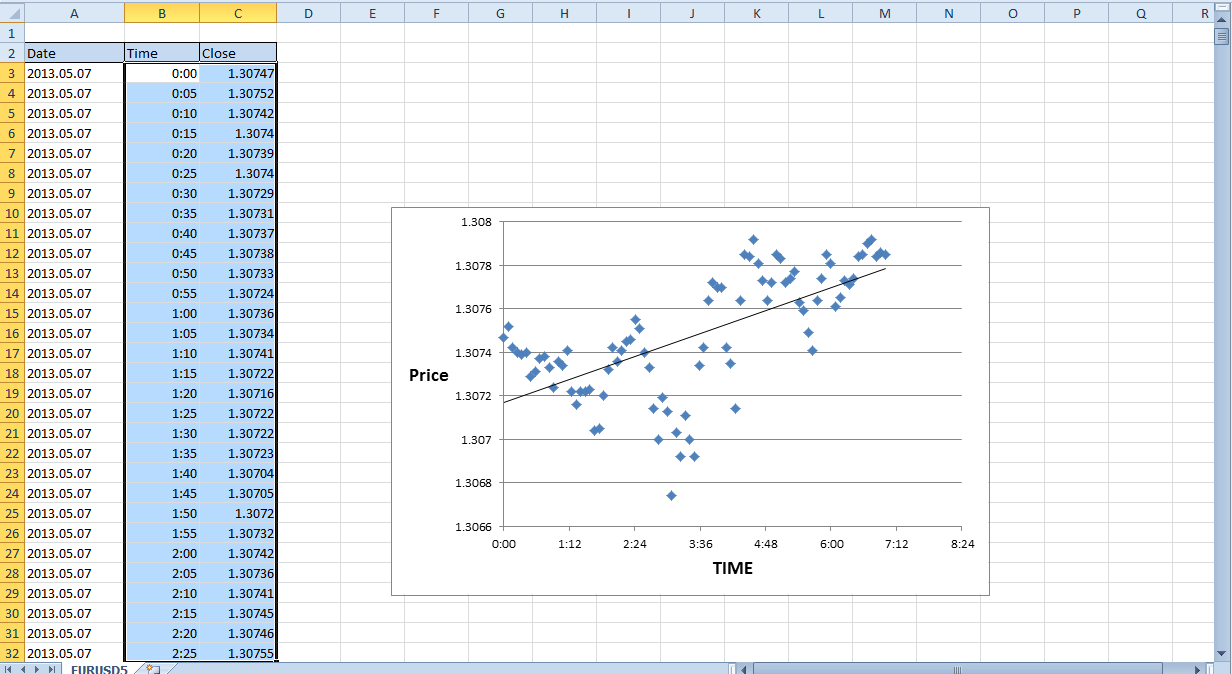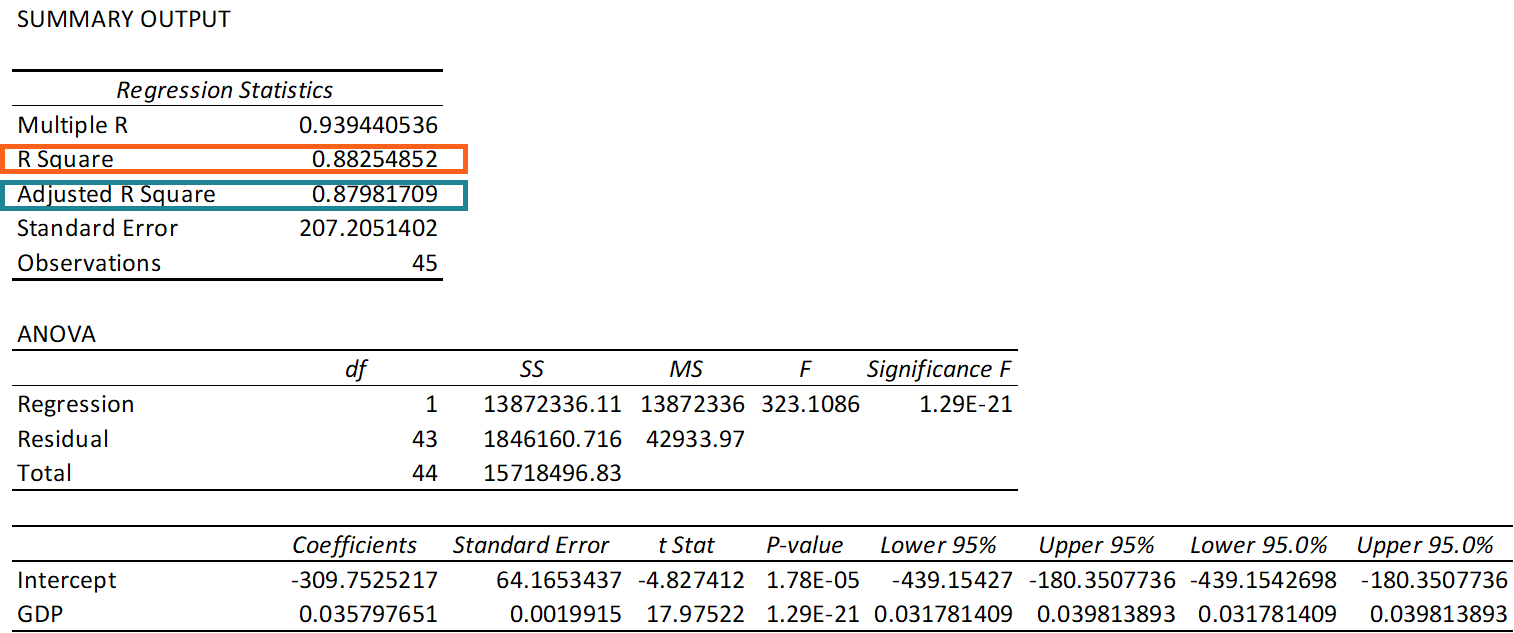

The following chart shows the Linear Regression Curve. It is useful to plot the end value of the line and channels for each prior day and also view the slope value and slope change for each prior day. The linear regression line is redrawn every day which changes its slope and also changes the standard deviation channel width. LRPctAnnSlopeChg: This is the change in annualized slope value from the previous day. +BnXn + error, the standard deviation of that error term is estimated by the standard error of the dependent variable in row 3. LRPctAnnSlope: This is the forecast annualized % increase or decrease in the line end value In the above charts you can see 2 indicators in the lower area:
#EXCEL LINEAR REGRESSION STANDARD DEVIATION HOW TO#
A high standard deviation means that values are generally far from the mean, while a low standard deviation indicates that. This article assists all levels of Excel users on how to calculate the correlation coefficient and R squared in regression by using the CORREL and RSQ.

The income values are divided by 10,000 to make the income data match the scale. The first dataset contains observations about income (in a range of 15k to 75k) and happiness (rated on a scale of 1 to 10) in an imaginary sample of 500 people. It tells you, on average, how far each value lies from the mean. In this step-by-step guide, we will walk you through linear regression in R using two sample datasets. The standard deviation is the average amount of variability in your dataset. EdgeRater has developed a value which is a forecast % of a 1 year period, meaning that if the line continued on for another year at the current slope rate it would be X% higher than it is today (or X% lower for negative slopes). Understanding and calculating standard deviation. It has the exact same slope value but the percentage increase is much lower.Ī more useful way to compare slopes among different stocks is to use a percentage value. If you need to, you can adjust the column widths to see all the data. For formulas to show results, select them, press F2, and then press Enter. For instance, compare the value of slope for a 20 day line which starts at 1000 and ends at 1010: Copy the example data in the following table, and paste it in cell A1 of a new Excel worksheet. The value of the slope indicates line direction and steepness, however it is not so useful for comparing the trend strength of different stocks due to being based on price rather than percentage. The variance (and standard deviation) does not depend on x. This population regression line tells how the mean response of Y varies with X. For instance if the 20 day linear regression line starts at a value of 100 and ends at a value of 110 the slope of the line is: The population regression line connects the conditional means of the response variable for xed values of the explanatory variable. Other than that, I have not had to use any other quantity on the regression statistics table in my 7 University semesters.A 21 day linear regression line with a 2 standard deviation channel Slope of the Linear Regression LineĪn interesting property of the line is the Slope which is the rise-over-run of the line. USING EXCEL ON THE COMPUTER TO FIND THE MEAN AND STANDARD DEVIATION AND TO DO LINEAR REGRESSION ANALYSIS AND GRAPHING Dr. The closer it is to #1#, the better it is, but it is only for a linear fit line. Where S1 and S2 are the standard deviation of X and Y, and r is the correlation between X and Y is calculated using regressioncoefficient Correlation between X and Y (Standard deviation 2 / Standard Deviation).To calculate Regression coefficient, you need Correlation between X and Y (r), Standard deviation 2. Oftentimes, even in a quantitative analysis course, you only need to further know the coefficient of determination #R^2#. The Regression coefficient formula is defined by the formula B1 r ( s2/s1). Here is an example of an Ohm's law analysis I did using a similar regression statistics table:

Where #s# is the standard deviation above, and: Where #N# is the number of trials, #x_i# is each individual value, and #barx# is the average of said values. #s = sqrt(1/(N-1) sum_(i=1)^N (x_i - barx)^2)# The standard error of the slope is applied in the calculations of confidence intervals and hypothesis tests which are essential for inference about regression.

The "Coefficients" are the slope or y-intercept in this case.


 0 kommentar(er)
0 kommentar(er)
